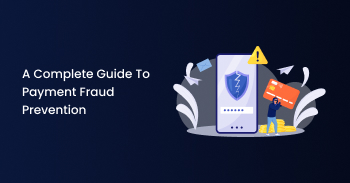Introduction:
In our modern world, where people share money and personal info, fraud risk has risen. Scammers are getting smarter, using modern technology, and taking advantage of weaknesses online. Real-time fraud detection and prevention measures are crucial in protecting businesses and individuals.
The Evolving Nature of Fraud:
Gone are the days of classic schemes involving fake checks and elaborate disguises. Today’s fraudsters operate from behind screens, using complex algorithms and stolen data to orchestrate cybercrimes. This calls for equally advanced methods of fraud detection and prevention.
Real-Time Detection: A Race Against the Clock:
Traditional methods of fraud detection, which rely on manual review and retrospective analysis, are no longer sufficient. Real-time detection involves monitoring transactions as they occur, using AI-powered algorithms to analyze patterns and anomalies. This approach allows for immediate action, flagging suspicious activities before they can escalate.
Key Components of Real-Time Fraud Detection:
1. Machine Learning and AI:
Machine learning algorithms have revolutionized fraud detection by learning from past data to identify new patterns of fraud. These algorithms can adapt and evolve to stay ahead of fraudsters.
2. Behavioral Analysis:
By studying user behavior, such as transaction history and device usage patterns, systems can identify deviations and trigger alerts when activities fall outside the norm.
3. Biometric Verification:
The use of biometric data like fingerprints, facial recognition, and voice patterns adds an extra layer of security, making it harder for fraudsters to impersonate genuine users.
4. Data Integration:
Combining data from various sources, including transaction records, geolocation, and device information, provides a comprehensive view that enhances the accuracy of fraud detection.
5. Rule-Based Systems:
Real-time fraud management solutions involve identifying ongoing fraud attempts and implementing measures to prevent them from occurring.
Preventive Measures: Stopping Fraud in Its Tracks
These systems apply predefined rules to detect suspicious activities. Although they cannot adapt like machine learning, they effectively detect familiar fraud patterns.
1. Multi-Factor Authentication (MFA):
Requiring multiple forms of verification (passwords, OTPs, biometrics) adds an extra layer of security, making it harder for unauthorized users to gain access.
2. Continuous Monitoring:
Keeping a vigilant eye on transactions and user activities in real-time allows for immediate response to potential threats.
3. Transaction Limits:
Implementing limits on transaction amounts can mitigate the impact of fraud by reducing the potential monetary loss.
4. Geo-Blocking:
Restricting transactions from specific regions or countries can prevent fraudsters from exploiting international loopholes.
5. User Education:
Educating users about the importance of cybersecurity, how to recognize phishing attempts, and the need to keep their information confidential can reduce the risk of falling victim to fraud.
The Road Ahead:
As technology continues to evolve, so will the tactics of fraudsters. Real-time fraud detection and prevention will remain an ongoing battle, requiring constant innovation and adaptation. Businesses, financial institutions, and individuals must collaborate to stay ahead of the curve and ensure a secure digital environment for all.
In conclusion, we must focus on and invest in real-time fraud detection and prevention. If we use the right tools and plans, we can stop cyber criminals and protect our online transactions.
by Sudesh Prabhu





